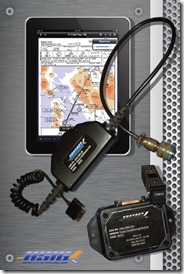Lithium batteries power the portable electronic devices that make life more enjoyable and work more efficient. Just ask any pilot with an iPad Electronic Flight Bag (EFB). But these rechargeable power sources have a dark side. When they lose their cool, a thermal runaway threatens everything around them.
Given the battery’s size, how bad could the risk of fire, explosion, and toxic fumes be? Consider the following, and remember that regardless the source—external or internal—heat is heat.
After analyzing the 92 battery incidents of all types that occurred during transport operations between 1991 and 2007, the DOT determined four likely causes. Only one, the second on the list, is a risk for EFB: in-use with improper charging and discharging.Think of rush-hour commuters heading in opposite directions on the same path at the same time. Outbound power flows from the negative to positive terminal. With a voltage higher than the battery produces, the charge muscle’s its way in, positive to negative. How much power the EFB needs for the selected task complicates this conflict.
There are two ways to mitigate this risk when bringing iPad EFBs into the cockpit: Go with the battery as the primary power and deal with the FAA limitations on use and power levels. Or connect ASIG’s fixed Power Conditioning Module (PCM) or portable Power Conditioning Unit (PCU) to the airplane’s 28-volt DC bus.
 Part of ASIG’s flyTab suite of EFB products, both units employ the same technology. In simple terms, they protect the airplane and EFB by constantly monitoring the in-use charge/discharge power requirements and providing clean, filtered power to an Apple 30-pin connector used with the iPad, iPhone, or iPod.
Part of ASIG’s flyTab suite of EFB products, both units employ the same technology. In simple terms, they protect the airplane and EFB by constantly monitoring the in-use charge/discharge power requirements and providing clean, filtered power to an Apple 30-pin connector used with the iPad, iPhone, or iPod.
Beyond intelligent thermal management, the PCM/U weighs less than .5 pounds and employs passive (no fan) cooling. They include GFI circuit protection, over-current and over-voltage protection, and connection load sensing. Soft, backlighted LEDs (to protect night vision) indicate “power available” and “system status.”
Designed to military specs, the modules exceed the FAA’s Part 25 design and operating requirements for power supply systems for personal electronic devices. And they satisfy the FAA Order 8900.1 requirements in Paragraphs 4-1644(E)(3) for secondary EFB power sources and 4-1648(A)(1) for EFB power source airworthiness requirements.
Both are designed and tested to meet RTCA/D0-160 specs for 28 VDC electrical transients operating at full load between –40C and 55C. They also proved themselves as neither victim nor source of EMI or RMI, rapid decompression left them unfazed.
Installing the PCM on N-registered aircraft requires an STC and a separate aircraft-specific installation kit, both of which ASIG can provide. The PCU does not require an STC for use with a Class I EFB. For complete details on the flyTab suite of EFB solutions, contact ASIG and learn how you can reap the iPad EFB rewards and mitigate the risks of its lithium power.




